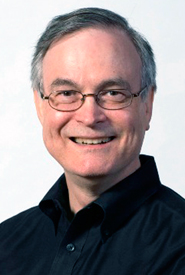Local churches close, sell buildings to make new ways to serve
Several regional leaders share reflections on the impact of economics on ministry: Hollis Bredeweg, Martin Wells.
| Story of ministry with Liberty Park and St. Paul United Methodist churches is in the October 2011 Fig Tree. |
The Rev. Dale Cockrum, Inland District United Methodist superintendent, said that recently three churches have closed and one sold its building.
Of the 50 churches he supervises, only 18 are served by a full-time United Methodist ordained elder. Ordained pastors from other denominations serve three, and part-time, certified lay ministers serve other churches. Some are yoked to create full-time ministries, and some have been yoked for 50 years or more.
 |
| The Rev. Dale Cockrum |
He said three churches closed in the last three years for different reasons:
--Farmington, where one church was located, lost so many residents that it could no longer support a church.
--Centenary United Methodist Church in East Central Spokane closed because, as the neighborhood changed, they were unable to draw new members.
--A small church with older members in Rathdrum was unable to draw younger people.
“I don’t know if it’s the economy or an absence of evangelical fervor, but while some churches have done well and grown, while others reached the end of their life span,” Dale said.
United Methodist pastors have different levels of training. Ordained elders have master of divinity degrees and serve as pastors.
Licensed local pastors complete a five-year training program equivalent to 50 percent of a seminary degree, taking four weeks of intensive summer classes at a United Methodist or other approved seminary each year for five years.
Certified lay ministers take a week-long course and have intensive mentoring and study to prepare them to take on a church.
Dale said about 65 percent of district churches have parsonages. Others offer housing allowances.
Originally, the UMC salary scale was based on a teacher’s salary, but Dale said it’s now hard to compare with health insurance, housing and pension costs.
“The cost of health insurance is killing us all,” he said. “A church must pay for a full-time pastor’s health insurance, and pastors have to pay for insurance for their spouses and family.
“So many spouses have to work, which is a problem in our system when we move pastors,” he said, noting that it’s hard today for spouses to move and find other jobs.
“Health insurance has driven some smaller congregations to part-time pastors, limiting who can serve them to people in a second career, retired or with a spouse working,” he said.
Building upkeep is another economic pressure, Dale said.
“With church growth spurts in the 1920s and 1950s, we have many 50-to-60-year-old and 80-to-100-year-old buildings—wonderful buildings in their time, but architecture and building use have changed,” he said.
For information, call 838-3058.
Copyright © September 2011 - The Fig Tree




